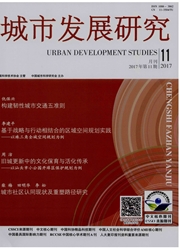

 中文摘要:
中文摘要:
我国目前处于城镇化的中期,在快速的城镇化过程中不同规模的城市都不同程度地出现温室气体排放增加的问题。在低碳约束下,我国必须寻求可持续的城镇化路径,首先应该回答的问题是多大的城市规模是可持续的。应用我国246个地级及地级以上城市10年间的面板数据进行实证研究,发现我国的城市规模—碳排放的经验模型为N形,最佳城市规模是1128万人。分东、中、西区域的研究结果显示:东、西部模型是N型曲线,中部模型是倒N型曲线。无论是全国的数据还是东、中、西的样本,除部分中心城市外,我国大部分城市正处于城市规模—碳排放上升阶段,即随着城镇化进程的推进,资源消耗和二氧化碳递增。
 英文摘要:
英文摘要:
China is in the medium-term of urbaniztion. During the course of rapid urbanization, cities of different sizes have met with the problem of greenhouse gas increase to some degree. Under low cabon constraint, we need to seek continuable urbanization path. Our empirical study with panel data of 246 cities in ten years finds that the relationship between city scale and carbon emissions is N-shape. And the optimal urban size is a population of 112.8 million. We compare the models of different regions and find that: the models of eastern and western regions show N-shape curves, while the model of middle area shows reversed N-shape curve. Therefore we find that most cities in China stay at a phase of cabon increase from the evidence of nationside and different regions' data. During the urbaniztion process , China's resources consumption and carbon emissions rise.
 同期刊论文项目
同期刊论文项目
 同项目期刊论文
同项目期刊论文
 期刊信息
期刊信息
